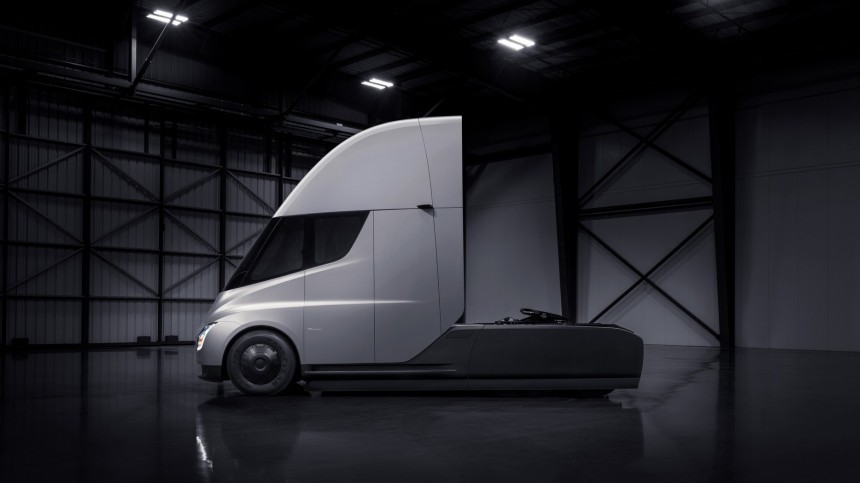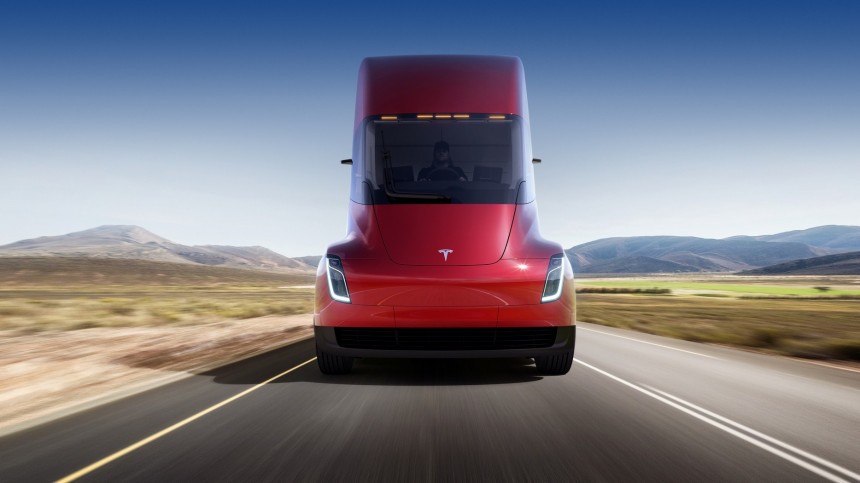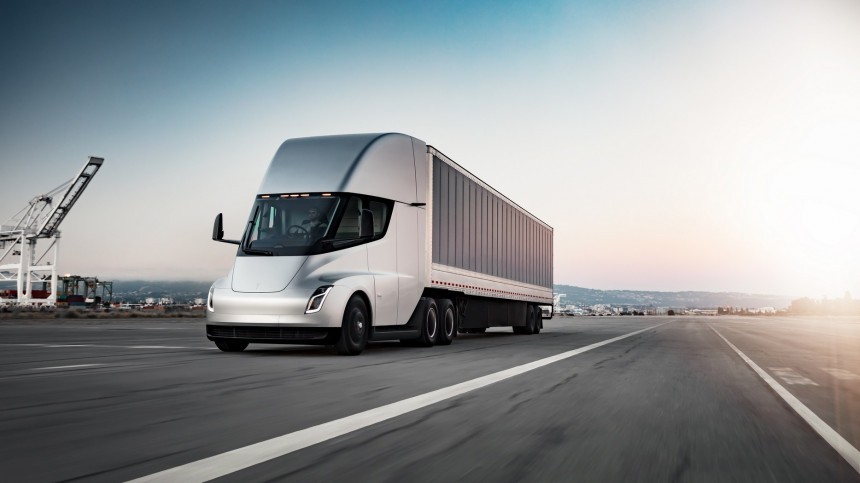A while ago, we wrote about Elon Musk’s claims that a Semi went from Fremont to San Diego with an 81,000 gross vehicle weight (GVW). Either it is much heavier than the EV maker wants to admit, or that 500-mile trip with that GVW is not true. Tomasz Orynski did not discuss that in a Twitter thread that went viral. The Polish trucker just discussed Semi's practical aspects that made him frame it as a “completely stupid vehicle.”
Orynski focused his entire analysis on cabin usability. Tesla claimed to have “built it around the driver,” but he talked about several examples of why that is just nonsense. Starting by how much space it just wastes with its central seating position. While that is the one the McLaren F1 adopted, it works better on hypercars than on trucks.
The Polish truck driver also states that the central driving position makes it more challenging to look ahead and overtake. That happens because a truck is a wide vehicle. If you are in the middle of the cabin, you are far from the edge of the lane, where you have a better view of the traffic ahead. On a two-way road, that’s also where you can see oncoming traffic.
Truck drivers have to pay tolls, talk to people in gatehouses, and handle the paperwork while entering a factory or delivering anything. The Semi does not give access to a window. In fact, it has no windows that can be opened: the driver will have to get up from their seat, open the door and deal with whatever they need – even in the winter.
Talking about cold weather, Orynski said that having the doors in the back of the cabin will force the driver to walk a bit to reach their seats. In the winter, with muddy boots, doing that will mess up the cabin interior. A truck with doors that give direct access to the driver’s seat prevents that from happening: they can take off their boots and just walk barefoot in the cabin.
That would be especially useful for trucks with a bed. The Semi apparently does not offer one, which the Polish driver considers another flaw in the electric truck’s concept. If you think it through, it also speaks a bunch about the limited use the truck will have, almost like a Class 8 last-mile truck, if that even exists.
A hypothetical bed could be in the back, but it is not there because that’s where the Semi has its doors. Another option would be to put a bed above the windscreen. Even if the Semi was not conceived for long trips – as the lack of a bed suggests – Orynski states that people driving at night often find it useful to take a quick nap to keep driving safely.
The Polish truck driver also hates the massive screens inside the Semi. According to him, the “tablets are simply not designed for use in moving vehicles.” Orynski says drivers need physical buttons that they can reach without taking their eyes off the road. He also complains about how they reflect stuff and glow too much, even in dark mode, which makes them terrible for night driving.
Orynski is also not happy about the rear-view mirrors. Thanks to the central driving position (again) and the cabin being narrower in the front, Tesla had to place them in really long arms. If they get dirty (and they eventually will), the driver will not reach them easily to clean them.
His last complaint about the truck is precisely something that Tesla seems particularly proud of: the bullet shape of the cabin, which imposes an angled windscreen. As aerodynamic as that is, Orynski said it would only help snow build up on top of it. He states that people who find it difficult to clean a passenger car's windscreen in the winter should have fun doing so on a glass surface sitting three meters above the ground. Vertical windscreens do not have that issue. In the summer, the angled windscreen will turn the cabin into a glasshouse.
While Tesla investors will say this is an isolated opinion, Cowboy State Daily interviewed truck drivers about the company’s electric truck and heard similar views to those Orynski expressed. They are particularly concerned with taking more than five minutes to charge the truck. Wait until they hear about what Orynski shared – and that the Semi has no bed.
The Polish truck driver also states that the central driving position makes it more challenging to look ahead and overtake. That happens because a truck is a wide vehicle. If you are in the middle of the cabin, you are far from the edge of the lane, where you have a better view of the traffic ahead. On a two-way road, that’s also where you can see oncoming traffic.
Truck drivers have to pay tolls, talk to people in gatehouses, and handle the paperwork while entering a factory or delivering anything. The Semi does not give access to a window. In fact, it has no windows that can be opened: the driver will have to get up from their seat, open the door and deal with whatever they need – even in the winter.
That would be especially useful for trucks with a bed. The Semi apparently does not offer one, which the Polish driver considers another flaw in the electric truck’s concept. If you think it through, it also speaks a bunch about the limited use the truck will have, almost like a Class 8 last-mile truck, if that even exists.
A hypothetical bed could be in the back, but it is not there because that’s where the Semi has its doors. Another option would be to put a bed above the windscreen. Even if the Semi was not conceived for long trips – as the lack of a bed suggests – Orynski states that people driving at night often find it useful to take a quick nap to keep driving safely.
Orynski is also not happy about the rear-view mirrors. Thanks to the central driving position (again) and the cabin being narrower in the front, Tesla had to place them in really long arms. If they get dirty (and they eventually will), the driver will not reach them easily to clean them.
While Tesla investors will say this is an isolated opinion, Cowboy State Daily interviewed truck drivers about the company’s electric truck and heard similar views to those Orynski expressed. They are particularly concerned with taking more than five minutes to charge the truck. Wait until they hear about what Orynski shared – and that the Semi has no bed.
I am watching a movie clips about @elonmusk's Tesla Semi - remember, the truck that was to revolutionize the transport industry when it entered the market 4 years ago ????
— Tomasz Ory?ski (@TOrynski) December 8, 2022
And I am going to tell you'all why it is a completely stupid vehicle. And I won't even want to talk about (1)





















